I borrowed the R code from the link and produced the following graph:
Using the same idea, I tried with my data as follows:
library(tidyverse)
library(tidytable)
library(ggforce)
library(ggtext)
library(camcorder)
library(bibliometrix)
library(bibliometrixData)
data(management)
M <- metaTagExtraction(management, "AU_CO")
CO <-
tidytable(
Country = unlist(strsplit(M$AU_CO,";"))
, year = rep(M$PY, lengths(strsplit(M$AU_CO,";")))
, nAuPerArt = rep(lengths(strsplit(M$AU_CO,";")),lengths(strsplit(M$AU_CO,";")))
)
df0 <-
CO %>%
summarise.(
frequency = length(Country)
, frequencyFractionalized = sum(1/nAuPerArt)
, .by = c(Country, year)
) %>%
arrange.(Country, year)
df1 <-
df0 %>%
mutate.(
min_year = min(year)
, n_total = sum(frequency)
, .by = Country
) %>%
mutate.(Country = fct_reorder(Country, min_year)) %>%
count(Country, n_total, min_year, year) %>%
mutate.(
a_deg = as.numeric(Country) * 2.7 + 8.5
, a = a_deg * pi/180
, x = -(year - min(year) + 10) * cos(a + pi/2.07)
, y = (year - min(year) + 10) * sin(a + pi/2.07)
, label_a = ifelse(a_deg > 180, 270 - a_deg, 90 - a_deg)
, h = ifelse(a_deg > 180, 1, 0)
, label = ifelse(h == 0,
paste0(Country, " <span style = 'color:darkorange;'>(", n_total, ")</span>"),
paste0(" <span style = 'color:darkorange;'>(", n_total, ")</span>", Country))
) %>%
arrange.(as.character(Country), year)
df1
# df1 %>% view()
Years <-
tidytable(
r = seq(
from = 10
, to = 280
, length.out = 12
)
, l = seq(from = min(df0$year), to = max(df0$year), by = 3)
) %>%
mutate.(
lt = ifelse(row_number.() %% 2 == 0, "dotted", "solid")
)
Years
f1 = "Porpora"
gg_record(dir = "temp", device = "png", width = 10, height = 11, units = "in", dpi = 320)
ggplot(data = df1) +
# Purple points
geom_point(data = df1, aes(x = x, y = y, size = n * 10), shape = 21, stroke = 0.15, fill = "purple") +
# Year circles
geom_circle(
data = Years
, aes(x0 = 0, y0 = 0, r = r, linetype = lt), size = 0.08, color = "grey50"
) +
# Year labels
geom_label(
data = Years
, aes(x = 0, y = r, label = l), size = 3, family = f1, label.padding = unit(0.25, "lines"), label.size = NA, fill = "grey95", color = "grey70") +
# Orange points (totals)
geom_point(aes(x = -290 * cos(a + pi/2.07), y = 290 * sin(a + pi/2.07), size = n_total), stat = "unique", shape = 21, stroke = 0.5, fill = "orange") +
# Family names and totals
geom_richtext(aes(x = -305 * cos(a + pi/2.07),
y = 305 * sin(a + pi/2.07),
label = label,
angle = label_a,
hjust = h), stat = "unique", Country = f1, size = 3.5,
fill = NA, label.color = NA, color = "#0b5029") +
# Annotations
annotate("text", 0, 293, label = "Total", Country = f1, color = "orange") +
scale_size_continuous(range = c(0, 8)) +
scale_color_viridis_c(option = "turbo") +
coord_fixed(clip = "off", xlim = c(-400, 400)) +
# labs(
# caption = "<span style = 'font-size:30px;'>Taxonomic publications, 1757-2021</span><br>
# Publications by family and year <span style = 'color:purple;'>(purple circles)</span>and total publications by family <span style = 'color:darkorange;'>(orange circles and text)</span><br>
# <span style = 'color:black;'>Source: World Spider Catalog - Graphic: Georgios Karamanis</span>"
# ) +
theme_void() +
theme(
legend.position = "none",
plot.background = element_rect(fill = "grey95", color = NA),
plot.margin = margin(0, 20, 20, 20),
plot.caption = element_markdown(family = f1, hjust = 0.5, margin = margin(100, 0, -100, 0), size = 14, lineheight = 1.4, color = "#0b5029")
)
which produces the following graph
However, I'm facing two issues with the produced graph.
- How to get pink points aligned correctly?
- How to use whole circle for country names?
Edited
Looking for more succinct and reproducible code which can be used for different data sets. Preferably looking for a generic function which can handle different data sets.


